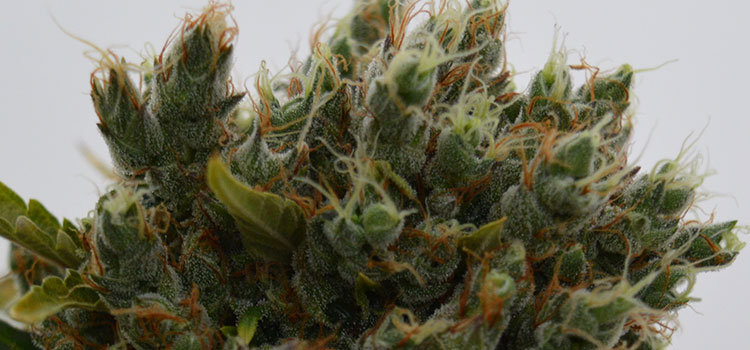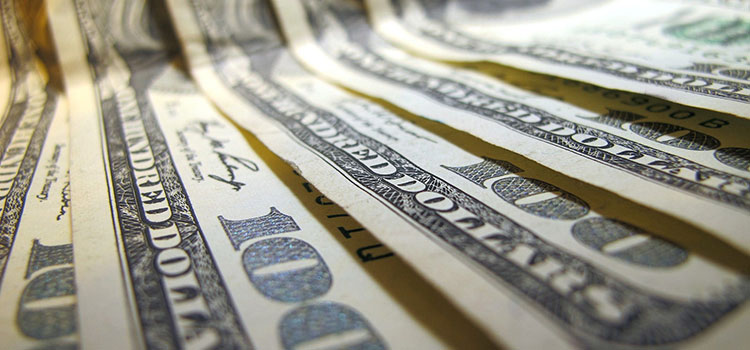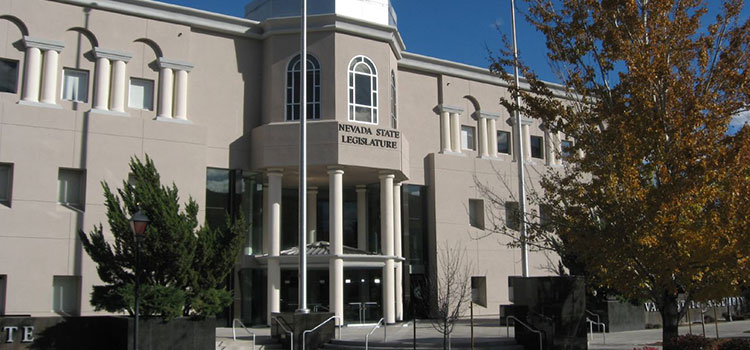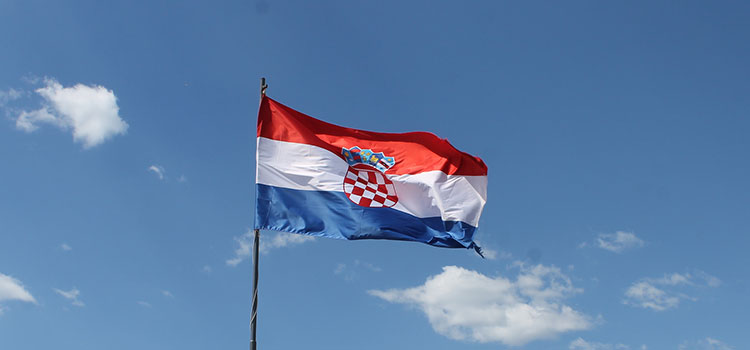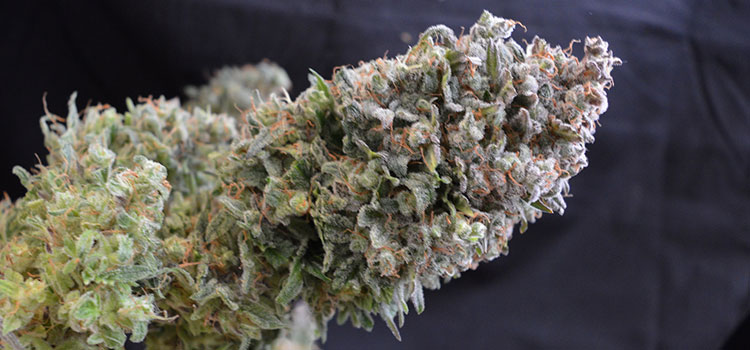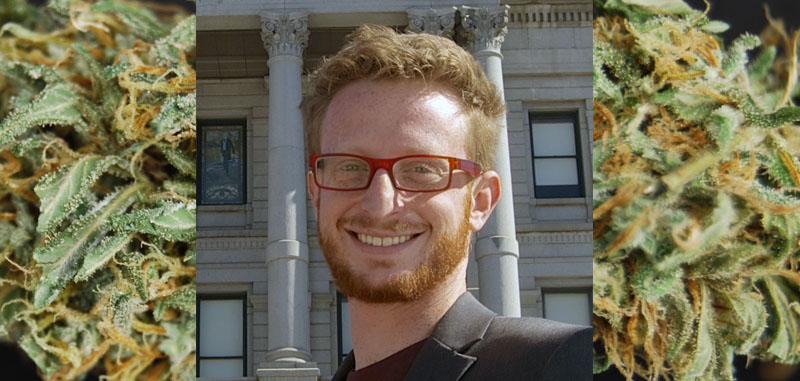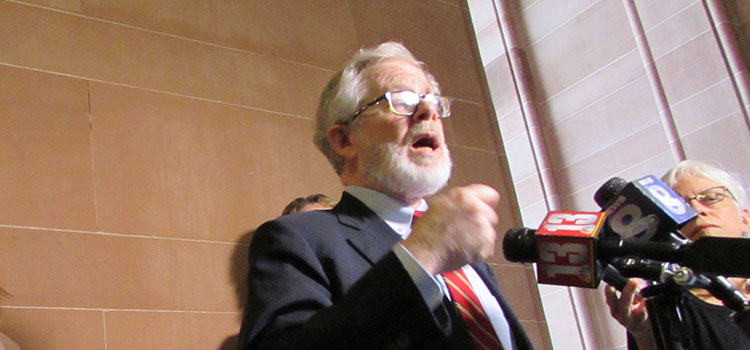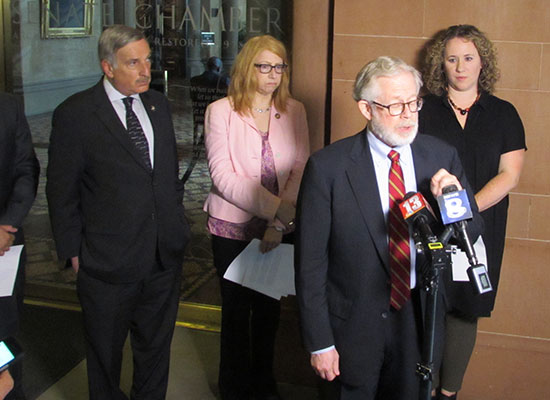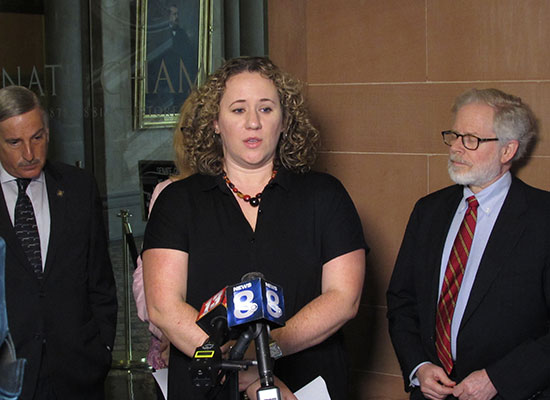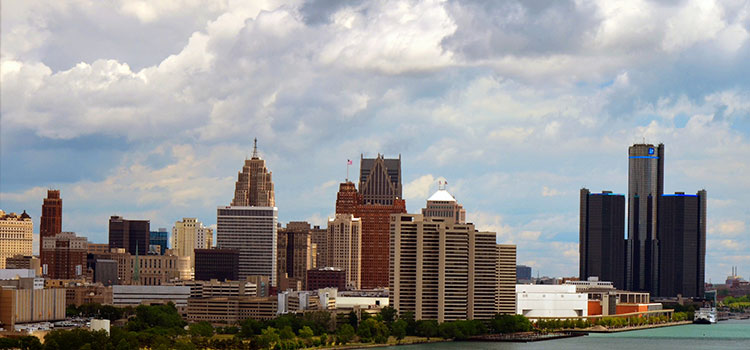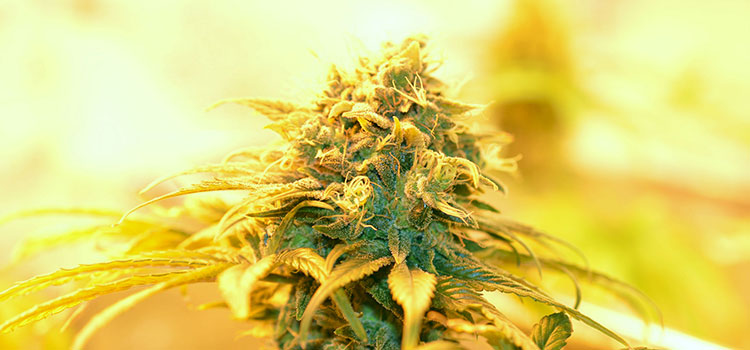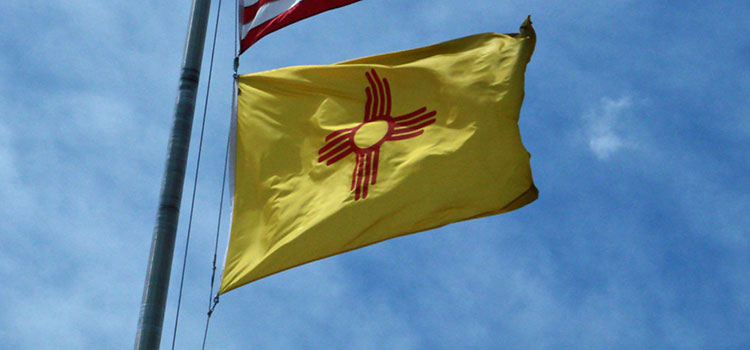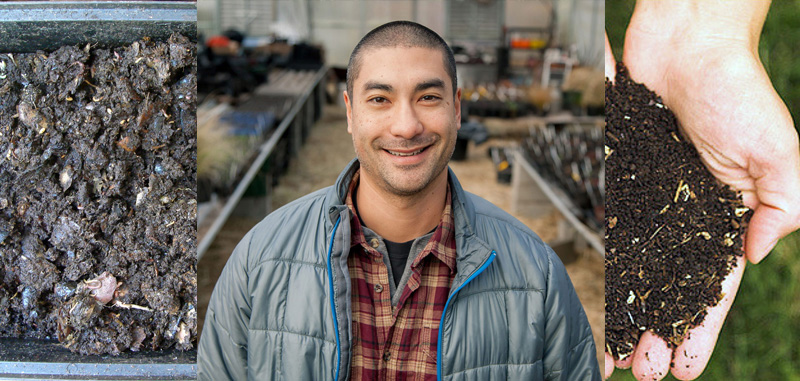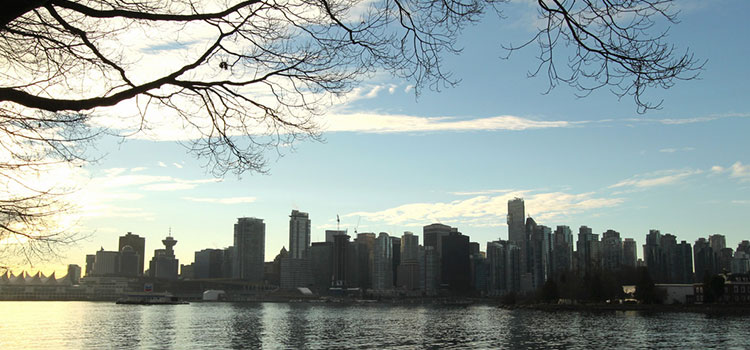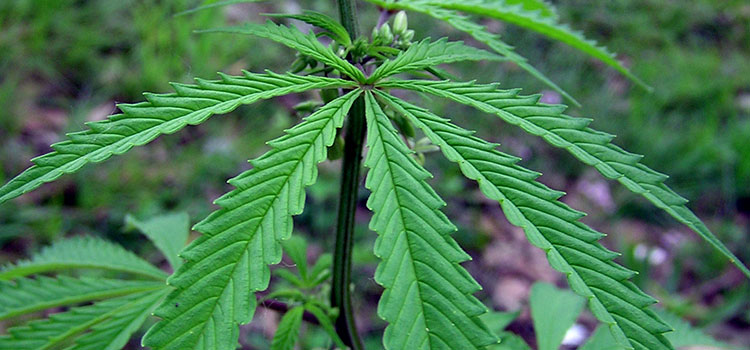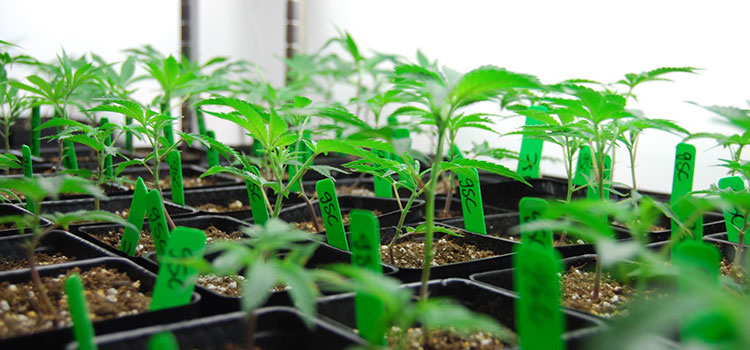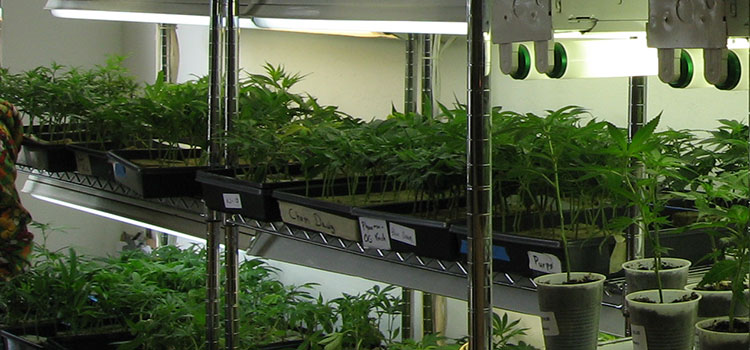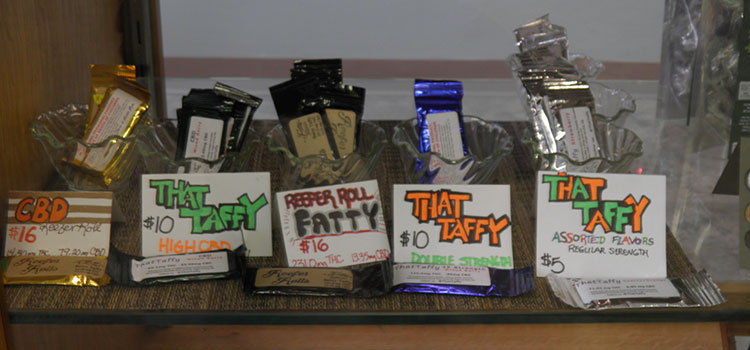If cannabis normalization is a battle, budtenders are on the front lines. From seasoned tokers who are looking for nuanced recommendations to first-timers who have no idea what being high even feels like, a budtender should be able to offer helpful suggestions to match any customer with the right product to ensure they have an enjoyable cannabis experience.
Our podcast host Shango Los recently met with Max Montrose, President of the Trichome Institute, a cannabis education and training company based in Colorado, to discuss the important role that budtenders play in the cannabis industry. In this episode, Max reveals how shockingly common it is for budtenders to spread misinformation they learned online, how dabbing incorrectly can be dangerous, why he believes there is a real risk of temporary psychosis from consuming too many edibles, and how budtenders could be held personally liable if they offer medical advice.
This is an episode you don’t want to miss! Listen to the interview using the media player below, or scroll down for the full transcript.
Subscribe to the Ganjapreneur podcast on iTunes, Stitcher, SoundCloud or Google Play.
Listen to the podcast:
Shango: Hi there and welcome to the Ganjapreneur.com Podcast. I am your host Shango Los. The Ganjapreneur.com Podcast gives us an opportunity to speak directly to entrepreneurs, cannabis growers, product developers and cannabis medicine researchers, all focused on making the most of cannabis normalization.
As your host, I do my best to bring you original cannabis industry ideas that will ignite your own entrepreneurial spark and give you actionable information to improve your business strategy, and improve your health and the health of cannabis patients everywhere.
Today my guest is Max Montrose. Max is founder and current president of The Trichome Institute, a cannabis educational content provider. He is the author of The National Cannabis Industry textbook and is an educational adviser to government and business specializing in cannabis safety, education and awareness.
Through The Trichome Institute, he provides standardized cannabis trainings for cannabis employees and produces educational materials for all types of cannabis enthusiasts. Max has established the Budtender Certification Course and has developed the sommelier approach to cannabis variety types called Interpening. Today, we’re going to talk about best practices for Budtenders. Welcome to the show Max.
Max: Hey, thanks so much Shango. Pleasure to be here.
Shango: Max, I think one of the important places for us to start are to talk about the attributes that make people good Budtenders because some people just seem to have the package of attributes that makes them warm and perfect in that environment and I know you travel the country talking to all sorts of Budtenders and you educate them. Let’s start with that. What makes a good Budtender?
Max: There’s really two things that makes a good Budtender and the first is someone who has good customer service skills because what you’re doing is you’re serving … servicing customers and the patients. Being able to have good communication skills, good listening skills and understanding what good customer service is is the first attribute but you could have the best customer service in the world. You could be the nicest, friendliest person ever and not know a thing about cannabis products and how many different kinds they are and how they work.
The second best attribute would be knowledge and understanding exactly what it is that you’re doing and how to do it in the best way.
Shango: Since Budtender courses are just starting to come about as people like you put together this information to make them available, where in your experience do Budtenders usually find their information?
Max: Well, that’s actually something that tends to scare me because in my experience, I have taken a ton of Budtender Certification Courses online and in person, and I’m usually bothered by what I find because the information is generally recycled old information from online and there’s so much information about cannabis today that it’s just so wrong that people are certifying people in misinformation.
One of the best and easiest ways you can tell that is by asking any of these education providers who has reviewed and approved your curriculum because often times the answer is nobody. Generally, people are finding a lot of information through dozens of cannabis education companies that are popping up left and right because it is becoming profitable to educate people in this business but the question is how real and legitimate is that education?
Shango: Yeah, that makes a lot of sense. Up to this point, the majority of Budtenders that I’ve come across have been simply the friends and family of the shop owners. They want to hire somebody that they trust. They want to give their nephew or niece a job and do you think that a higher standard for Budtenders is finally catching on? Are we to that point yet? Or do you think that standardization or practices for Budtenders is still an infancy and really hasn’t made any … it hasn’t made much progress yet?
Max: It is in its super infancy still. That’s a fact. Budtenders are not looked at as serious currently but that’s actually about to change. Colorado is … Everybody knows Colorado is the pioneer state when it comes to this industry, except Colorado doesn’t require any training whatsoever to be in this job.
We have over 10,000 Budtenders in the state and many of them don’t know the difference between the indica and sativa the way and they believe that they do but if you ask them, it’s very obvious that they don’t or I can’t tell you how many people I’ve met who have no idea that edibles are a different drug than smoke flower or understand why CBD is different from THC.
I don’t really see businesses in Colorado hiring friends and family. They hire people for $9 an hour, $10 an hour and there is just an enormous line of applicants out the door. That doesn’t really require much care or training whatsoever.
Shango: Gosh, sorry. I got to tell you, I’m really surprised to hear or nine or ten bucks an hour. Out here on the West Coast, a 15, 14 seems to be a more what is typical but that really goes to show how many people in Colorado really want to use the budtending job as a entry path into the industry where they’re willing to work for near minimum wage just to get their foot into the door.
That makes sense right because that can be a very effective way to get in the industry but with so many people being willing to work for less than they may make somewhere else, it brings down the rate of pay for everybody.
Max: It does. This is such a big topic and it’s so important and there so many different angles to it. First of all, let me say this. You’re harvesting correct when you’re talking about using it as an entry point into the business. It’s a little bit of a sacrifice if you’re serious because this industry is not easy to get into.
That being said, I started out as a Budtender for $9 an hour and I now own multiple businesses in the industry and I know a lot of people who started out as Budtenders who are really doing great with fantastic businesses. It’s definitely possible. Unfortunately, it depends on the business owner and there are so many old school owners, OG’s who treats this business very different than corporate business owners do.
They really look at their Budtenders like tissue paper. You just pull one out and get a new one. They’re just ten bucks an hour kind of a thing. It doesn’t really matter like why invest in their education, why invest in their training which is really backwards thinking because the dispensaries that do care, that do invest in their Budtenders training, they make better sales and are more profitable and it’s because people walk in and people aren’t stupid.
You can walk in a one dispensary and see, “Okay, this is a shop where nobody has a clue what’s going on and therefore they don’t feel safe purchasing products there, where you walk into the other store next door and all of the Budtenders are trained. They’re certified. They understand the products.” It’s an entire different shopping experience and those stores are making more money.
Shango: Yeah, that makes a lot of sense. I think that it’s a common errant belief that just being able to replace employees is a good thing versus being willing to put investments in your employees not only so that they can sell more effectively but because they’ll stay around longer because they feel like you’re investing in them. That makes a lot of sense. We’re going to take our first short break. When we come back, we’re going to start talking about your Budtender Certification Course specifically. You are listening to the Ganjapreneur.com Podcast.
As a cannabis entrepreneur, you know how challenging recruiting quality talent can be. Your day is already busy enough and yet there is an ever growing pile of resumes on your desk and your team is begging you to hire more help. Hiring the right person can make a profound impact on your company. There’s no reason that you have to suddenly be an expert hiring manager.
Not when there is Viridian Staffing, Viridian Staffing recruits solely for adult use cannabis, Medical Marijuana and Hemp companies and those that service them. Viridian Staffings recruiters, each have over ten years of experience and they will use that experience to recruit the kind of employees that will make you look good.
Whether you’re looking for a master grower, extractor, grow room support or trimming, Viridian can find an appropriate person in your area. They can even recruit administrative or graphic design professionals who may not need cannabis experience, because you are a startup, you may also need human resources help for a while.
Viridian Staffing can make sure that your HR files are complete and keep you out of trouble with state and federal employment requirements, because the cannabis industry is booming, cannabis recruiting companies are popping up all over the country but good marketing does not mean good recruiting.
Some of the recruiting shops that have opened are run by novices who do not yet have a thorough understanding of employment law and the complexities of hiring for cannabis. Don’t hire an amateur to find you a professional. Consider Viridian Staffing to make that stack of resumes disappear and complete your team with exactly the hire you are hoping for. You can find out more at viridianstaffing.com, that’s V-I-R-I-D-I-A-N staffing.com and now back to the show.
Welcome back, you are listening to the Ganjapreneur.com Podcast. I am your host Shango Los and our guest this week is Max Montrose, founder of Trichome Institute. Before the break, we were talking about the importance of properly educating Budtenders both so that they’re giving good advice and recommendations to the customers but also because that ability causes them to sell more product which is also good for the store.
Max, I know that one of the key things that you have developed education wise for the public is your Budtender certification. Since on the first part of the show we were talking about the kinds of things that Budtenders don’t know. Let’s talk about the kinds of things that you’re teaching them that they should know. Just give us an overview of the Budtender course.
Max: Sure. To me what a Budtender course is, it’s about budtending and what that means is selling cannabis products. If you don’t understand the differences between the cannabis products then how can you do your job? So often when I take other people’s budtending courses, they just don’t even mention the products. They don’t teach people what the biological and chemical differences of indica and sativa are. I just don’t understand how you’re supposed to effectively educate the consumer on what the experiences they’re about to have because this is not selling ice cream or clothing.
You’re selling someone a psychoactive experience and the differences between the products are from zero to a hundred, from a five milligram edible sucker to a 95% THC Dab. What our course really focuses on is the products. Obviously as I said earlier in the show you can’t be a good Budtender without having good customer service. That actually is the first chapter. What is customer service and how does that work?
We also cover things like slang how okay is it to utilize slang in the job and sometimes it is okay and it depends on the customer and it depends on the situation in the scenario. Our course is very down to earth because we’ve been Budtenders before. We’ve run dispensaries, we know how it goes but the main focus of our course is the products.
Essentially, our Budtender Training and Certification textbook which we licensed to other cannabis education providers worldwide is essentially the bible of any and all cannabis products that could ever be. It literally breaks down every single hash and concentrate and how they are different from each other and how they should be vended responsibly by understanding each customer and patient tolerant level and experienced usage so that you can make a responsible choice when helping people select these psychotropic experiences.
Shango: That makes a lot of sense. Not only to have a standardized tome that everybody’s working from so that as new information comes out of the science you can just simply upgrade the one book and it gets everybody on the same page but also for tourists they’ll be getting the same information when they come to visit Colorado as they will get when they go to Washington or as they’ll get when they go home to California or wherever so that people are starting to get a uniformity in education.
That sounds like a really useful thing considering all the snafus we’ve had so far here in early legalization. Let me ask you this. Often when I walk into a cannabis shop, the Budtenders are sometimes staring off or chatting amongst themselves or even worst I asked a question and I’m told either that they don’t know the answer or that they tell me something that I know is not accurate.
For that first moment, when the Budtender is interacting with a new customer, how do you recommend that Budtenders handle that moment to help the customer get the experience they’re looking for?
Max: That really just comes down to good customer service. It’s not really product knowledge at that point. It’s how do you put your cellphone away because you’re on the job working and the thing is if people took … people need to take Budtenders more seriously so that they hire more serious people, the problem is this because Budtenders don’t receive any benefits or enough pay or education.
Generally, they hire some kind of shtunky people. It’s not uncommon to lock into a dispensary and be a little frustrated that you have an uneducated person trying to help you who really doesn’t care. That’s something that needs to change in this industry and it is changing because the dispensaries that are moving towards becoming more professional are going to prevail especially just due to customer selection.
When a new customer walks in the door, the first thing you need to do is analyze who your customer is by understanding what their tolerance is and their experience level but also what their goals are and what are their goals aren’t, what to avoid. One of my biggest frustrations with Budtender customer service is they love to suggest the product that they love which is problematic because the things that they really love and appreciate with their extremely high tolerances might not be the perfect product for someone who is coming in who’s brand new.
Shango: Yeah, that makes a lot of sense. Give an example. What are the couple questions that you would ask your customer to help tease out for them because like a lot of these people who are coming in the stores, they either haven’t tried cannabis or they haven’t tried cannabis since the 70’s or the 80’s when they were younger and before they had kids. What are kind of the some questions that you can suggest to help bring that information out of the customer?
Max: My number one question that I ask that I start out with is kind of the ice breaker that also gives me the most amount of information which is the least offensive to ask is, where are you from? The geography question is really incredible how much information you can get knowing where someone is from and yeah, that might be profiling a little bit but that’s what were trying to do here.
We’re trying to profile. Does this person come from a society that is knowledgeable in cannabis products? Because if they tell you that they’re from Bend, Oregon or Seattle, Washington or Anchorage, Alaska or Denver, Colorado or Oakland, California, you probably don’t have to hold their hand and describe them the differences between indica and sativa.
In fact, you probably annoy them because they probably already know or believe that they know. If you find someone who’s from a cannabis friendly geography, you just automatically know that they probably know more than most even if they are new to it but you don’t know that for sure because everyone’s different. That’s when you would go further in asking, “Well, are you someone whose really experienced in cannabis?”
If they tell you yes then you know that the kind of shopping experience they want is one where they know what they’re doing and they don’t really need help unless they ask for it or for the guidance versus when someone says, “I’m from Oklahoma or Tennessee.” then you can say, “Okay, how familiar are with you cannabis?” Based on what they say, you might be able to understand that they either need more help or not. I think that’s a really good starting point.
Shango: Yeah, I think that’s true and another thing that I liked while doing my research about the Budtender course that you put out is the understanding of where you draw the line on how much education a Budtender should have to be able to offer this concierge level services because for example, part of the ability to direct a customer to the right product would realistically involve understanding the different forms of THC and their effects that the other cannabinoids like CBD, CBV, CBN, CBG and of course like THC to CBD ratios and how they work with different ailments in case the person is truly a patient.
How much of that information do you think is necessary for the Budtender? The examples I gave, do you think they should know all of that? Or do you that so long as they can gently directly you to the products, that’s enough for what they’re being paid today.
Max: It has to be a gentle amount of the very technical information for a few different reasons. When we’re teaching Budtenders who specifically work in medical dispensaries, the number one thing we train them is you can’t give medical advice, not just because we think it’d be a good idea not to because it’s against the law and you yourself could get in trouble, not even just your shop, you can get in trouble.
I have to remind Budtenders from time to time that there are certain things that they do in this business that could have handcuffs thrown on them and it’s kind of like a little bit of a reality check because sometimes they get a little jaded after three months being on the job and they think it’s easy.
The most important thing is is you’re not a doctor and when you’re selecting medicine for someone, the way that you go about that needs to be careful and gentle. That’s just a reality. You can suggest to people things that you know based on quality trainings and personal experience but a lot of the times, understanding cannabinoid ratios doesn’t really even matter unless you understand the endocannabinoid system and then we’re getting into medical science and I’ve never met a Budtender in my life who has had any amount of medical training.
The Trichome Institute is not a medical training facility. We understand cannabis and what it does and how it works and that’s what a Budtender needs to know too. They need to know what cannabis is and how it works and recommend what is going to happen to a patient when they take these specific products and the best thing that you can do is have the product reps train the Budtenders themselves on how their products work specifically because some of these products are more detailed than what a general education can give you. That’s what I’d say.
Shango: Yeah, right on. I must admit your answer went counter to what I was expecting which … it’s always a pleasant surprise for me during interviews because I was thinking, I was expecting your answer to be, “Oh, they should know all of this stuff so they can pass on proper care.” But realistically, you’re right. It is more of a risk for both the Budtender and for the store to be giving this information.
In some cases, I can imagine store owners having to be in a position where they’re discouraging a really educated Budtender from going as far as the Budtender can, simply because they’re dispensing information while … they maybe accurate about the functioning of the endocannabinoid system and a CBD to THC ratio for a daily supplement or something like that.
That’s not really their role at this part at this point and it could actually get them in trouble. Maybe actually just providing … knowing where to stop is an important thing.
Max: It is and here’s the reality at the same time. Budtenders aren’t paid good enough to be educated well enough to understand those complicated things to a point where they actually could give good advice. It is dangerous how many Budtenders think they know what they’re talking about and are advising patients this is how products work and they couldn’t be further from the truth and that can get dangerous because people are using these products for serious medical reasons.
One of the things that drives me the most insane in this industry is the strain name dilemma. I can’t tell you how many patients walk in and say, “I’m looking very specifically for this type” and you just say, “Why?” “Well, because I heard on the internet, I read from a website or an app that this strain works this way.”
It’s like, “Okay, you do know that all the strain names made up right? Like I’m the guy who relabeled them because the pound came in and it didn’t have a name associated to it so I had to come up with a name that I knew people associate as brand trust ability so I’m going to counterfeit Blue Dream and I’m going to call this pound Blue Dream. Okay?”
In Colorado, we have 250 types of Blue Dream because 249 of them aren’t Blue Dream. If you use a website to understand how a strain is and how it will affect you and there are some websites out there, multi-million dollar huge ones that I know everyone knows what I’m talking about who are like, “Listen, this is a strain and this is how it works” and it’s like, “Where did your information come from?” “Oh, it’s aggregated from thousands of unregistered stoners who have no idea what they’re talking about.” That’s whose telling you how these genetics work.
The thing is if you have a patient whose got PTSD, they’re coming in and they’re asking you to help them prevent a paranoia experience and there are more types … there’s lots of types of cannabis that induce paranoia and the thing is you can detect which strains are paranoia inducers based on science, based on the smell of the bud and the structure of the bud and the features of it more than the name that was most likely counterfeited down the line in the black market before that genetic reach the hands of the legal market which is our situation today. The strain name thing is a big one for me.
Shango: Yeah, I can believe that. It can even be influenced by the particular grower and how they handle the crop and what terpenes were brought up by the particular nutrients that they put into it. You’re right. It’s really messy. I got a laugh about. I had not really considered the fact that most of the online databases for strains are crowd sourced which that’s the same reason why I hate using stuff like a lot of these medical websites like WebMD and these places that … maybe not WebMd but the other places where you Google your ailment and they all tell you you have Ebola and/or cancer and you’re probably going to die.
It’s just all these people posting their fears and concerns. Similarly with the cannabis sites, you’ve got the response from one cannabis enthusiast in one part of the country from one experience and they’re probably writing it high then and that’s a bad way to crowd source information. We need to take another short break, we’ll be right back and we will be talking about the complexity of suggesting edibles to tourists. We’ll be right back.
The Ganjapreneur Podcast is listened to by tens of thousands of cannabis entrepreneurs and enthusiasts every single week. These folks are most likely your target customers and we’d like to introduce you to each other. Our down to earth and information rich commercial breaks can deliver your message to the cannabis business community and others who just find relief in getting high.
If you want to reach out and connect with our audience in the most personal way that we can offer, go ahead and drop us an email at grow@ganjapreneur.com and we can talk about you becoming a commercial sponsor of the Podcast. Thanks for listening and being part of the Ganjapreneur family. Now, back to the show.
Welcome back. You are listening to the Ganjapreneur.com Podcast. I am your host Shango Los and our guest this week is Max Montrose, founder of The Trichome Institute. Before the break, we were talking about the importance of giving accurate information to customers when they come in to the cannabis shop and one of the most difficult things to give feedback to a customer on is edibles because they affect people so differently right from how their body handles it to also the milligram requirement from somebody whose a newbie to somebody who has got a high tolerance. What do you teach Budtenders Max so that they can give safe and reliable information to somebody who may be new to edibles?
Max: Everything that we teach from The Trichome Institute, our rule is we do not teach misinformation. How you can guarantee that you’re not going to teach misinformation is by collecting your data from the most reliable resource from the very top from the beginning and that’s what we do.
In Colorado, the state advertises constantly public service announcements, little cards and dispensaries everywhere and now the cannabis trainers out here do this exact same thing. The state of Colorado has this set idea about edibles that says start low and go slow which is true but what they mean by that specifically is start with ten milligrams and wait two hours and it’s like, “Okay, well, is that scientifically true or do you just think that that would be the best way to begin?” And the answer is, “It’s not scientifically true at all.”
What we do is we look at the science of cannabis, how does cannabis work scientifically? If you want to go to the top, the world’s authority on cannabinoid pharmacokinetic pharmacology is Dr. Franjo Grotenhermen of Nova University. That’s where we get our medical cannabis science from and if you research that science, that science suggests from Franjo that some people don’t feel the effects of edibles until six hours.
If you were to use the Colorado recommendation ten milligrams every two hours, if you’re someone who is going to get obliterated from five milligrams but you don’t feel it in a six hour period, you’re going to have 30 milligrams of THC in the time period that you would wait to feel it and then you’re going to get the train wreck effect which is the cars will stack up and hit you as the effect continuous to hit you as the hours keep stacking if that makes sense.
Shango: Yeah, it creates a cascading effect.
Max: It does, it does. We don’t say ten milligrams in two hours. We say less than five milligrams and wait all day long because what would it hurt if you didn’t have a terrifying experience? It would be a good thing if you didn’t versus the opposite way. You can always eat more later. You can’t take away what your stomach is digesting once you’ve eaten too much.
We tell people to really take it easy and the reason why is because edibles are a completely different drug than every single product that could be sold in the dispensary period and most people don’t know this. It baffles me that companies who own edible manufacturing facilities who literally make millions of dollars producing these products have no idea that they make a chemically different drug substance than all other dispensary products.
The difference is THC being digested through the liver instead of getting in the blood system. Smoking cannabis, vaping cannabis, tincture cannabis, sublinguals and transdermals will all enter your blood system and get into your cannabinoid, your endocannabinoid system, your CB1 and your CB2 through your blood system and that doesn’t change the molecular property of delta-9 THC but delta-9 THC is not water soluble and you are water yourself and you excrete extra chemicals through water bases.
Your liver has to make delta-9 water soluble and it does just that. It literally takes elements of the molecular chain and it rearranges the molecule so that it’s a water soluble format. The water soluble format in first metabolite of delta-9 is a different kind of psychoactive. It’s 11-hydroxy-THC, not delta-9 THC.
That molecule just so happens to work differently because it’s a different molecule. It’s unbelievably similar, unbelievably close like the difference between OxyContin and Oxycodone. You know they mean? It’s just a little tweak but that tweak makes a huge difference and the difference is 11-hydroxy can become expediential and what that means is your five milligrams could turn into an effect that’s really more like 25 milligrams.
If you eat a 100 milligram chocolate bar because you’re from Oklahoma and your Budtender wasn’t educated and didn’t tell you you’re not supposed to eat the whole damn thing. You’re only supposed to eat a 10th of the bar. This is why the state of Colorado has a 400% increase in ER visits from edible hospitalization specifically and most specifically from out of town people, people who aren’t from cannabis geographies who don’t know and Budtenders who aren’t explaining to them how this stuff works.
Shango: Even though taking that much cannabis it certainly not going to kill them. They are going to have a bad experience that may scare them off cannabis and might cause them to cause to call the paramedics but even though we know scientifically they’re going to be fine, they’re going to have a traumatic emotional experience and we want them to avoid that.
Max: Yeah, I’m going to touch on something that is really serious and is another thing a lot of people don’t really know and it’s something that the cannabis industry just needs to come to grips with because it’s a reality. Unfortunately, 11-Hydroxy more than delta-9 is … It is a for-sure thing that it’s specific 11-Hydroxy that has caused more than just a few times in the state of Colorado where we call that non-permanent edible induced psychosis.
You can actually read the reports of how old these people were, the fact that they are cannabis users for years and years and years with highly developed tolerances for whatever reason bought a chocolate bar and yes we actually make medical cannabis chocolate bars in the state that are 500 milligrams, 500 and because edibles can chemically become two to six times stronger, we’re talking about an experience that is thousands of milligrams of 11-Hydroxy and it is literally causing people to loose their minds for up to 24 to 48 hours and they’re put in to the psychiatric ward.
We did have one guy who pulled out the gun and shot his wife, blew her brains out and another who jump off the balcony in the same week and this is the kind of stuff where people who are advocates against cannabis are using stories like this to try to shut down our entire industry. It doesn’t have to be that way. The key here is education. Okay? If you don’t know what 500 milligrams means in a chocolate bar, that’s dangerous. If I asked you Shango, If I said a pint of beer equals a glass of wine equals how much spirit? You would say?
Shango: A shot.
Max: Yeah. Okay but if I asked someone from Oklahoma or from anywhere else, even people from Denver Colorado, even budtenders, people who know weed.
Shango: Should know better.
Max: Should know better. Do you understand the ratio or difference of edible milligrams? No. Nobody does. Okay? This is where education is really, really critical. Edibles are a serious thing and that’s why we take them seriously and that’s why we utilize science from the very, very top and which is why all of our education is reviewed and approved by the highest authorities of cannabis law, science and medicine.
Shango: Max, nobody wants to hear the story that you just said. I’m only thinking about the ramifications and I can imagine the audience shaking their head and some people getting pissed at you for saying this but that’s the problem with the story that you’re bringing out because those of us who are cannabis enthusiasts A, we don’t want to believe what you’re saying and B, we don’t want the prohibitionist folks to be able to use that kind of a story against the industry but we are in a brand new day of people using cannabis.
Obviously we’re going to learn more about cannabis use as suddenly all these new people are using it. A story like you’re saying if it gets played from the prohibitionists all these enthusiasts are going to go, “Oh, that’s BS studies and you can’t believe them because they were brought up on DARE.” Then on people on our side we just want you to shut the hell up because we don’t want you to ruin the industry by suddenly creating a situation where cannabis can be called dangerous but really the heart of the matter is that as a society and as a culture, we are becoming re introduced to this powerful herbal supplement in our lives and really talking about this so that we all can have the proper education while hard is something that we have to do.
Max: Yeah, let me just put it to this way. I didn’t believe this edible induced psychosis thing and when I was actually working with the health department, I kept telling them that they’re all crazy and out of their minds and this is just propaganda rhetoric, this is Reefer Madness shit but the reality is I did the research myself and I looked into it and I read the hospitals reviews and I read the bios on who these people were and how experienced with cannabis they were and I read the things that they were saying during their non-permanent psychosis and I think that’s another important part.
You’re not going to go crazy forever. You could either have the worst experience ever. You could either pass out and wake up the next day fine but it is people who are kind of their brains are more setup for psychosis where edibles just snap the point that kind of keeps them in line but it isn’t forever but the thing is it is real and true and guess what else is real and true?
Dabbing is really, really dangerous and people, some people they watch interviews of me explaining this and the dab heads get really upset and frustrated with me but for all of the people who had no idea what happens to your CB1 receptor when you dab and specifically what you dab and how you dab it. People thank me all day long for saving them from doing something that they were doing on a daily basis that they didn’t understand could have really potential negative consequences in the future.
The thing is if you’re an adult and you understand what the dangers are, what the risks and the rewards, you’re totally allowed to go do whatever you want. I don’t care what you do. You can jump off a cliff. You can shoot heroine. People are allowed to be people. Adults are allowed to be adults but it is not fair to anyone to allow someone to engage in something that’s potentially dangerous without the knowing. That’s not okay.
As long as people understand what the dangers are, they can actually navigate how to do dabbing the right way because there are types of dabbing that aren’t bad for you, that aren’t dangerous but the question is what’s the difference between proper and non proper dabbing and it takes a little bit of time to explain that. It’s not rocket science but if you don’t know, you probably should know.
Shango: Max, it was almost … it is time for us to wrap up the show but there’s no way that I can let you go without getting … you are an intentional and you have a slow cadence to your speech but we need to hear this right so can you give me the 90-second version of safe dabbing versus unsafe dabbing because if I don’t ask the question I’m going to get all this hate mail about. “He was right there and you had him, let’s hear it.” Break it down for me but do so swiftly because we’re almost out of time.
Max: Nope. I’m not going to do it. Just kidding man. One thing I’ll say is there is so much to know like it’s more than edibles, it’s more than dabbing. I have literally published four textbooks worth of information that people should probably know and how we update people on how this stuff is coming out and when it’s coming out is by signing up on our email listing on our web page because we’re constantly updating education and our education is constantly getting better.
When a lot of this online stuff is coming out, I’d love to inform people when that is so if people want to stay up to date with these kind of stuff, I highly recommend our newsletter especially because every newsletter we send out, we give free articles and free videos of me explaining things like this from time to time to make it interesting but so that we don’t piss off any viewers. The difference between safe and unsafe dabbing is what you’re dabbing and how you dab it.
There actually is no science that heating up a titanium nail doesn’t produce off gasses of titanium when inhaling the soft metal and a lot of people will say, “Well, the titanium is medical grade titanium.” And it’s like, “Great. When they put medical grade titanium into your body, do they heat it up as a soft metal thousands of times over and over again and do you inhale the vapor off of it?” “No. Okay? We don’t know that heating little pieces of metal and smoking off them aren’t dangerous.” But I’ve actually seen people dab with paper clips when they couldn’t find another tool to use.
Well, paper clips are really soft aluminum and aluminum is a neurological retardant. If you’re pressing aluminum to a hot plate and sucking off of that, you are damaging your brain in a really heavy way. The other thing are the parts per million and in Colorado, we have an accepted legal limit of 800 parts per million of flammable BHL, Butane.
It is okay to have 800 parts per million of a flammable gas that you literally suck through your cerebral cortex via dabbing and a lot of dab heads actually got some grief from when I considered it freebasing but if you understand the definition of freebasing, dabbing is free basing.
You’re not just freebasing cannabinoids, you’re freebasing a lot of toxic crap and a lot of people don’t know that CO2 favors pesticides and fungicides more than it does cannabinoids and because pesticides and fungicides are unregulated and people are dumping gallons of toxic chemicals on flowers which really maintain them through the sticky trichomes, when you concentrate that, just know that we’re already sometimes the growers already spray more than four times the legal EPA limit for what we consider for food on cannabis which you smoke and then when you concentrate that, it sometimes can become ten times higher.
Four times times ten times, were talking about a hundred times more bigger than the EPA limit of poisons that you’re now freebasing to your brain. Okay? It’s more than just the residual part per millions of the solvents. It’s poisons that the extraction method is condensing and then at the end of it, what happens is, isn’t it amazing that a dab is 95 % THC but the experience only last 15 minutes, why is that?
The reason why is because your cannabinoid receptors in your brain, your CB1s are so heavily overloaded. Every single receptor is loaded at once that you’re actually … the vast majority of what you’re dabbing gets wasted and the cannabinoids are just flying through your brain and your brain really doesn’t really know what to do with it so it shuts down your receptors by killing them and turning them off to protect yourself because your body doesn’t understand what’s happening with this violent ingestion of cannabinoids.
What that means is you are literally mowing down your cannabinoid receptors which is your ability to perceive cannabis. Euphoria is out the window and your tolerance is going sky rocketing up which is why dab heads gets frustrated smoking flower. They can’t get high smoking a joint with their friends anymore and it gets really scary when dab heads bring their dab kit to concerts with them or to the bar.
I’m not kidding. I’ve had buddies pull out a dab rig on the bar because that’s their only method of getting off at this point because they’ve mowed down their ability to perceive cannabis in a more gentle way. That’s heavy. I think that’s heavy.
Shango: That is really heavy. I can imagine that you’re splitting the audience into one group who are feeling liberated by the information that you’re providing and then the other part that you’re really pissing off because you sound like a DARE ad, but I know you to be a very dedicated cannabis lover who who understands the medicinal benefits and actually you just want people to use it right and this is information that is not getting spread around and this is why we had you on the show.
Max: I appreciate that. Before I piss everyone off, I’ll just say that there is an okay and a proper way to dab and that’s more of your Rosin things that cannabis that wasn’t sprayed with chemicals, organic cannabis that was extracted with a non-solvent so you’ve got 0.00 part per million and you dab glass on glass. If you’ve got a glass dab rod and you got a glass nail and you’re using a really clean extract that has no residual solvents or poisons, what’s the problem?
There isn’t one. Okay? If you’re going to be a dabber in that boutique and love that experience, you should do that and also some really critical medical patients benefit from dabbing. People who have MS whose bodies become so constricted with their brain lesions firing off that they don’t have enough time to sit there and smoke a bowl or smoke a joint because they can’t move. They’re physically stuck. I’ve actually given my own MS patients, I’ve put the rig up to their lips.
If they can at least inhale that amount of medicine that it works that fast, their bodies relaxed instantly and they’re almost … whatever their problem is is solved with a snap of the finger because it’s a dab. This is America. People should have a free choice. It would suck if all beer was only 3.2%. Some people like whisky and the harder stuff so take a dab. I just want you to know the difference between positive dabbing and potentially really dangerous dabbing and that’s all.
Shango: Right on Max. I’m really glad that there’s somebody like you willing to say the hard stuff who’s putting together the curriculum for Budtenders around the country. Thank you so much for being on the show Max.
Max: Thank you Shango. I really appreciate it.
Shango: Max Montrose is the founder and president of The Trichome Institute. You can find out more at trichomeinstitute.com and I really do recommend that you go to check out the website, not only can you sign up for the newsletter that Max was talking about where you can get updated information like the surprising things he’s been saying during this third part of the show but also we never got a chance to talk about the interprener sommelier certification program that he offers where you study terpenes intensely and you approach it as a wine connoisseur. It’s really interesting stuff and it’s there on the website at trichomeinstitute.com.
You can find more episodes of the Ganjapreneur Podcast in the podcast section at Ganjapreneur.com and in the Apple iTunes store. On the Ganjapreneur.com website, you will find the latest cannabis news, product reviews and cannabis jobs updated daily along with transcriptions of this podcast.
You can also download the Ganjapreneur.com app in both iTunes and Google Play. For info on me and where I’ll be speaking, you can go to shangolos.com. Do you have a company that wants to reach our national audience of cannabis enthusiasts? Email grow@gajapreneur.com to find out how. Today’s show is produced by Michael Rowe. I am your host Shango Los.
